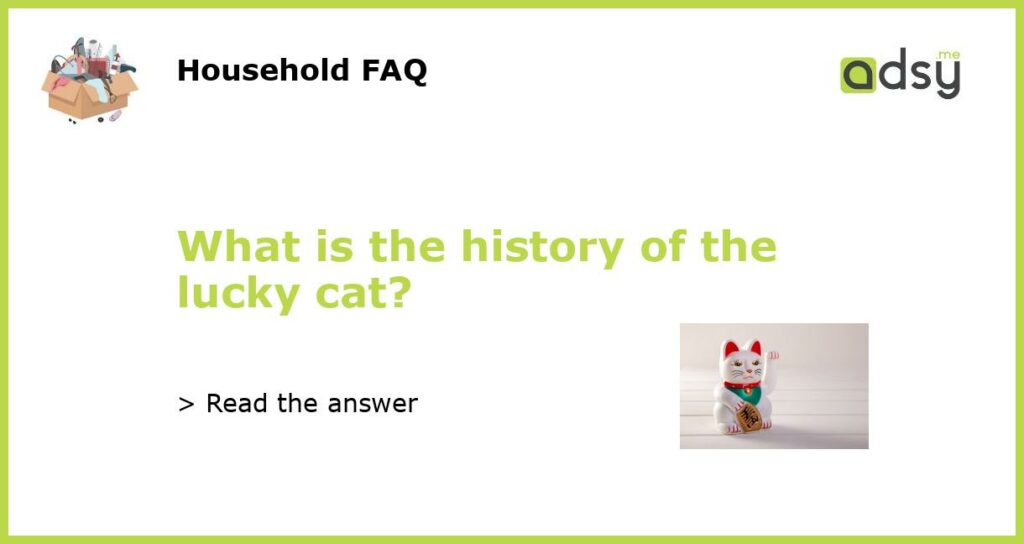The origins of the lucky cat
The lucky cat, also known as Maneki-Neko, is a Japanese figurine commonly seen in Asian businesses, including restaurants, shops, and homes. The origins of the lucky cat date back to the Edo period in Japan, which began in the 17th century. Back then, the lucky cat was used as a talisman to bring good fortune, prosperity, and happiness to its owner.
How the lucky cat became ubiquitous in Japanese culture
The lucky cat’s popularity exploded after a fire engulfed a building in the Asakusa district of Tokyo. A merchant by the name of Utagawa Hiroshige was caught in the flames and rescued by a cat that appeared to beckon him with its paw. Hiroshige was so grateful that he created a figurine in the cat’s image, which became known as Maneki-Neko.
What do the different colors of the lucky cat signify?
Lucky cats come in an array of colors, each of which has a specific meaning. A white lucky cat signifies purity, black brings protection, gold attracts wealth, red brings love, and pink is associated with romance and relationships.
The symbolism behind the lucky cat’s paw position
The fortunate feline’s paw position is symbolic of different things, depending on which paw is raised. If the right paw is raised, it signifies money and good fortune. A left paw raised means the lucky cat is welcoming in more customers and people. Both paws up imply protection and warding off evil spirits or bad luck.
The lucky cat’s appearances outside of Japan
Today, the lucky cat is a ubiquitous symbol of good fortune worldwide and is often seen in Asian businesses and restaurants globally. Their popularity has even led to adaptations in pop culture and on the big screen, such as in the film “Lost in Translation.”






